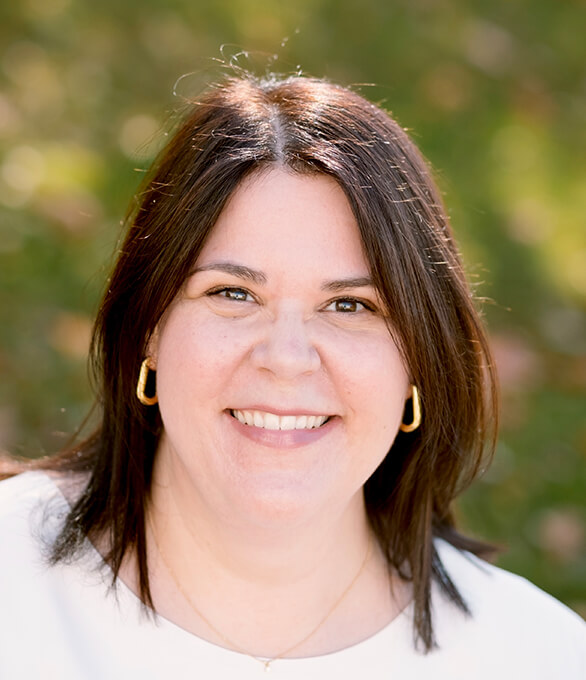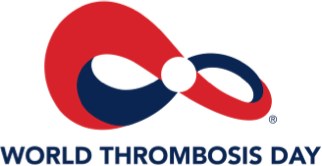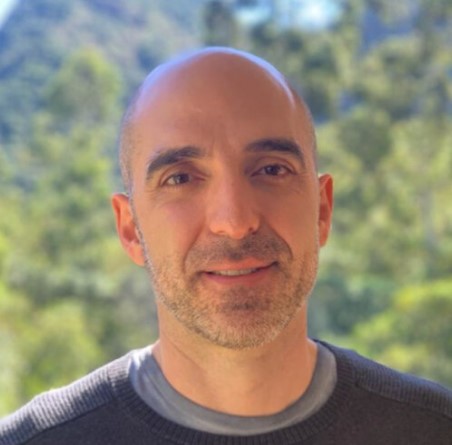Meet the World Thrombosis Day Steering Committee Chair: Lana Castellucci, M.D., M.Sc.

Lana Castellucci, M.D. M.Sc., WTD Steering Committee Chair
By: WTD campaign team
Back in 2019, Lana Castellucci, M.D., M.Sc., a thrombosis specialist from Ottawa, Canada, opened a promotional email from the International Society on Thrombosis and Haemostasis (ISTH). The email shared that the World Thrombosis Day (WTD) campaign was opening a call for applications to join its Scientific Steering Committee.
Dr. Castellucci, an Associate Professor in the Faculty of Medicine at the University of Ottawa in Canada, and a Scientist at The Ottawa Hospital Research Institute, jumped at the opportunity.
“I thought to myself: this opportunity looks really exciting,” she recalled. “A lot of the campaign’s tenets, including knowledge translation, closely align with my work as a clinician and with Thrombosis Canada, so I applied for the position.”
Dr. Castellucci was selected to join WTD as a member of the Steering Committee, and most recently, was appointed Chair, effective January 2023. In her role as Chair, Dr. Castellucci is responsible for leading the overarching direction of the campaign, including its scientific course, research opportunities, thematic focus areas and more—together with a committee of 14 global experts. She also works hand in hand with the new Steering Committee Vice Chair Erich De Paula, M.D, Ph.D. from Brazil.
“As Chair, one of my goals is to reinforce public messaging about what WTD is and bring it back to some of the basics, such as signs, symptoms, risk factors and treatment to improve the public’s understanding of these potentially life-threatening conditions. I also hope to broaden our approach for education and share more about other conditions such as atrial fibrillation and stoke,” she said.
In this article, Dr. Castellucci sits down with the WTD campaign team to pull back the curtain on her life as a clinician, describe some of her priority research projects and her goals for WTD during her tenure.
In residency, what interested you about the field of thrombosis and why did you choose it as a specialty area?
After medical school, I did an internal medicine residency. Internal medicine is a specialty that encompasses many different specialties, including respirology, cardiology and thrombosis. After internal medicine, I did a critical care fellowship, which allowed me to see very sick patients in the intensive care unit (ICU). I noted that my ICU patients often suffered from blood clots, which peaked my interest in thrombosis. I then went on to complete a thrombosis research fellowship and Master of Clinical Epidemiology.
I have worked with many world-renowned thrombosis researchers here in Ottawa, Canada and I was impressed with how enthusiastic they were about research and patient care. It sparked a clinical interest for me, and that is why I chose to specialize in thrombosis.
What is a typical day like in your role as a clinician at the University of Ottawa?
A typical day in the thrombosis clinic for me usually starts around 8 a.m. There are usually about 20-25 patients booked for the morning. Patient needs in a typical clinic can vary widely: some will have blood clots or atrial fibrillation, while others who are having surgery and need us to manage their anticoagulation perioperatively.
Our team has a great set up with nursing support, thrombosis fellows, internal medicine residents and medical students. It gives us a multifaceted approach and the ability to provide care to so many patients, as well as to train the next generation of thrombosis specialists.
I also work as a general internist caring for patients admitted to hospital with various illnesses, such as heart failure and pneumonia.
Do you have a research project or publication in which you are most proud?
My research program is focused on comparative safety of anticoagulants. One of my big research studies is called COBRRA, which stands for “Comparison of Bleeding Risk Between Rivaroxaban and Apixaban.” These are the first head-to-head comparison trials between rivaroxaban and apixaban for the evaluation of anticoagulation safety.
Our research team is conducting the study in two different populations: patients with acute venous thromboembolism (VTE), meaning they have both a deep vein thrombosis and pulmonary embolism, and also in patients with atrial fibrillation. The COBBRA VTE Study should be completed in a little more than a year and then the atrial fibrillation study started in the last year. Both trials will have close to 3,000 patients involved, and the COBRRA VTE study has sites in Canada, Australia and soon in Ireland.
The study has been exciting to work on. As clinicians, we always talk about using anticoagulants for treating blood clots and we consider the best way to treat patients with them. However, the bleeding risk is not always considered as much. However, this aspect is important to consider for us to know which treatment option is safest in terms of limiting bleeding risks. The COBBRA study will help us better answer that in the future for patients.
You worked on the frontlines of the COVID-19 pandemic and treated many COVID-19 infected patients. What did you learn from that experience?
The COVID-19 pandemic was a unique experience for all of us. In my work as an internal medicine doctor, we looked after many COVID-19 patients, particularly during the early surges. I saw what was happening both from caring for hospitalized patients with COVID-19, as well as from the perspective of treating patients with COVID-19 and blood clots.
One of the things I learned during that time is that I am privileged to work with incredible colleagues. We came together during a very difficult time, and dedicated a lot of our time to caring for our COVID-19 patients. A lot of new research came from that time and we were involved in a lot of different research studies about COVID-19 and thrombosis. We also created new partnerships from a research perspective, which was rewarding. That said, there were many challenging and sad times during the pandemic.
Today, the severity of illness in patients with COVID-19 is much lower. We are not seeing as many blood clots related to severe COVID-19 infection. We have better medications to treat COVID infection, and of course vaccinations too. The landscape has really changed.
Tell us about your work with Thrombosis Canada and other organizations such as CanVECTOR. What motivates you to volunteer your time and expertise with these organizations?
Thrombosis Canada is our national thrombosis awareness organization that focuses on knowledge translation of thrombosis care. It is comprised of dedicated physicians, nurse practitioners, pharmacists and other healthcare professionals and offers programs such as webinars, educational activities and guidance on topics. All of us have common interests and many of us are involved in the other organizations such as ISTH and CanVECTOR.
CanVECTOR is our national research collaboration program. In essence, those involved in CanVECTOR work to assist each other with research projects across the country. We have different platforms that focus on different areas of research. CanVECTOR also has a patient partner group that ensures all studies have patients involved in them.
What is your vision for the WTD campaign during your tenure as Chair?
What I would like to achieve during my tenure is to ensure that we improve knowledge translation about thrombosis broadly to the general public. We have a new campaign theme “move against thrombosis,” which is a great opportunity to maximize understanding of what those words mean and how to capitalize on them. The term “movement” has a physical connotation, but it means prioritizing the campaign’s messaging across platforms and communities. To me, it means raising awareness in different ways—not only through physical activity—but also by galvanizing people.
Education is one area that we can really focus on. I think there is a misconception in the general public about what blood clots are and who is at risk. We have done great work, but there is more work to do to continue increasing awareness. Stroke and heart attack are common terms that people know, but they do not know that blood clots are behind those conditions. We need to focus on educating in a different way.
Additionally, I would love to see WTD expand its research and bring in more Steering Committee members from ISTH designated Reach-the-World countries. It is a global campaign and it is important that we have global representation in our decision-making.
I am also excited that this year we are launching a new award category for the WTD awards program. We are offering an Activity of the Year Award specifically for Reach-the-World countries and/or those in low to middle-income countries.
This year’s new theme for WTD is “move against thrombosis.” What does this mean to you and how do you motivate patients to do the same?
What I try to do is to model good behavior to my patients in order to motivate them to adopt similar practices. For example, on my clinic days, I may be seeing 20 patients and a lot of what I am doing is actually sitting down and talking to them. I recognize that it is important for my own health to stay active and keep moving. Despite my busy schedule, I find creative ways to incorporate movement into my day. Sometimes this may mean taking a quick walk during the lunch break, or if I have a meeting with a colleague, I may ask them to take a “walking meeting” rather than sitting down with them in an office. In addition, I have an under the desk bike that I use when at my desk.
When I talk to my patients, I make sure to refer them to educational resources that they can trust. There is a lot of misinformation out there, so it is important that patients know the right places to get reliable health information. Personally, I refer my patients to the WTD website and the Thrombosis Canada website.
You have a very full plate between your clinical work, research projects, and your advocacy work with WTD, Thrombosis Canada and others. How do you make time to juggle so many responsibilities?
I am fortunate that I work with incredible people. I have great research staff that work with me on the COBRRA trials. They do a lot of the heavy lifting and they make my job so much easier. As a leader, I believe it is important to empower my team, ensuring they have the resources to reach our collective objectives. We have weekly meetings and it makes it very rewarding and a lot easier to do the day-to-day things. It is similar with my other leadership positions—I work with great people. It also helps that I am also very passionate about the work that I do. I truly love it.
Share this post, choose a platform
Related Campaign News
World Thrombosis Day (WTD) is a global campaign that aims to [...]
In this new series, World Thrombosis Day (WTD) shares interviews with [...]
2024 campaign pillars emphasize new research and partner collaboration CHAPEL HILL, [...]




